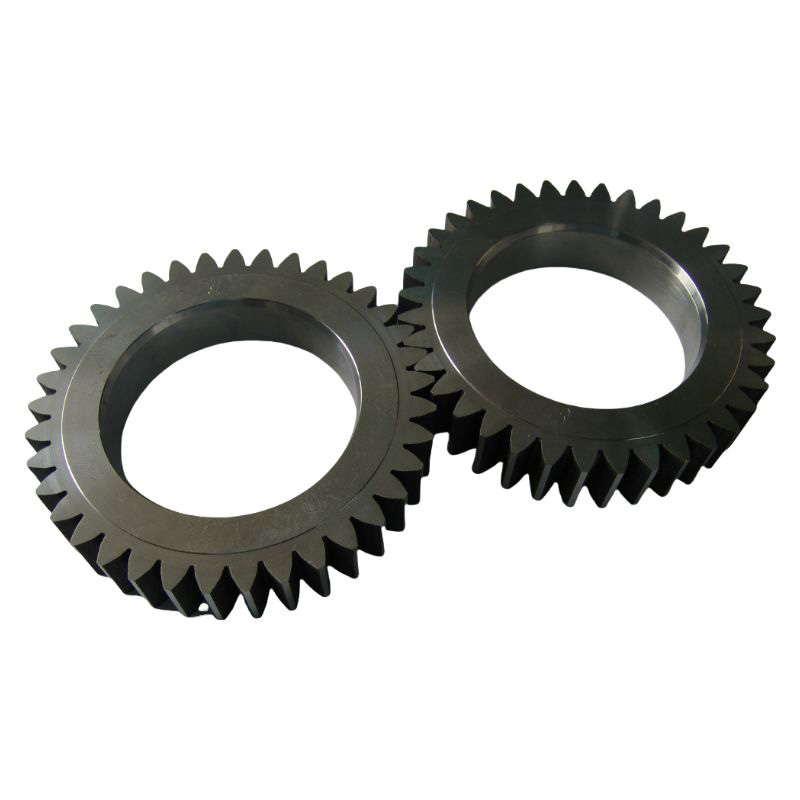Forging parts processing is a metalworking technique that involves shaping metal using compressive forces. This process, often used to create parts with high strength and durability, can be performed in various ways depending on the material, the desired shape, and the equipment available. Here, we explore the different methods of forging parts processing, focusing on cold forging, warm forging, and hot forging.
Cold Forging
Cold forging parts processing refers to the shaping of metal at room temperature or slightly below. This method is typically used for metals with high ductility, such as copper, aluminum, and some steel alloys. Cold forging requires less energy than hot forging because the metal does not need to be heated, but it can be more difficult to form due to the metal's resistance to deformation. Common cold forging techniques include cold heading, cold extrusion, and cold pressing.
Cold Heading: In this process, metal wire or rod is fed into a die and shaped by a punch that forces the material into the die cavity. This method is often used to create fasteners like bolts and nuts.
Cold Extrusion: Cold extrusion involves forcing metal through a die with a smaller cross-section to create a part with the desired shape. This process is often used for creating precision parts.
Cold Pressing: Similar to cold extrusion, cold pressing uses high-pressure machinery to force metal into a die cavity. However, the pressure is applied over a longer period, allowing for more complex shapes to be formed.
Warm Forging
Warm forging parts processing involves heating the metal to a temperature below its recrystallization point, typically between 400°C and 900°C (752°F and 1652°F). Warm forging offers advantages over both cold and hot forging, as it reduces the force required for deformation while maintaining good surface finish and dimensional accuracy. Common warm forging techniques include warm extrusion, warm pressing, and warm rolling.
Warm Extrusion: Similar to cold extrusion, warm extrusion involves forcing heated metal through a die to create a part. However, the higher temperature allows for easier deformation and a wider range of materials to be used.
Warm Pressing: Like cold pressing, warm pressing applies pressure to heated metal in a die cavity. The higher temperature helps to reduce resistance to deformation, making the process more efficient.
Warm Rolling: Warm rolling involves passing heated metal between rotating rolls to reduce its thickness and lengthen it. This process is commonly used to create sheets, plates, and bars.
Hot Forging
Hot forging parts processing involves heating the metal to a temperature above its recrystallization point, typically above 900°C (1652°F). This allows the metal to be shaped more easily, as the high temperature reduces its resistance to deformation. Hot forging is often used for large parts and materials that are difficult to form at lower temperatures. Common hot forging techniques include hot die forging, hot open die forging, and hot upset forging.
Hot Die Forging: In this process, heated metal is placed in a die and shaped using a punch. The die and punch are heated to match the temperature of the metal, ensuring even deformation. Hot die forging is commonly used for creating parts with intricate shapes.
Hot Open Die Forging: Hot open die forging involves shaping heated metal using two dies that are not fully enclosed. This allows for larger parts to be forged and for the material to flow more freely.
Hot Upset Forging: In hot upset forging, a heated metal workpiece is compressed between two dies or punches, increasing its length and reducing its cross-section. This process is often used to create parts with a larger cross-section than the original workpiece.
In conclusion, forging parts processing is a versatile technique that can be used to create parts with high strength, durability, and precision. The choice of forging method depends on the material being used, the desired shape, and the equipment available. Cold forging, warm forging, and hot forging each offer unique advantages and are suitable for different applications.
